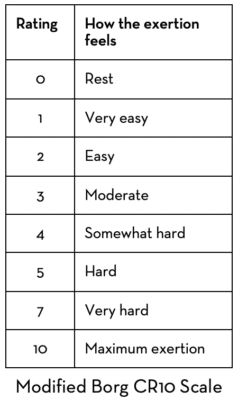Summary
If you're serious about getting the most out of your workouts, monitoring and staying within your target heart rate is essential. Exercising within this range helps provide the best balance between intensity and safety—so you can make the most of your efforts and keep yourself injury-free. Read this article to learn more.
The weather is warming, the sun is peeking through the clouds and the trails are drying out. It’s that time of year when people feel encouraged to exercise outdoors.
“Being active and exercising is vital to both getting and staying healthy,” said Scott Lesina, lead physical therapist at Asante Outpatient Rehabilitation. “Engaging in outdoor activities has the added benefit of fresh air and our beautiful Southern Oregon scenery.”
Regardless of where or how you’re physically active, it’s important to understand your body’s limits and embrace the process. “Exercise is a life choice and not a quick fix,” Lesina said. “Overdoing it can lead to aches and pains. It can also leave you feeling defeated and not wanting to continue your exercise and healthy lifestyle path.”
One key to a safe workout is to stay within your target heart rate. A simple way to find your rate is the talk test: If you can carry on a brief conversation while exercising, you’ve likely found the right target.
“If you can easily carry on a conversation, try exerting yourself a little harder, maybe pick up the pace a bit; however, if you have trouble with even a short sentence, decrease your intensity,” Lesina said.
An easy measure is the rate of perceived exertion, or RPE, with a goal of maintaining a moderate level between a 4-6 on the scale. “You’re still in your comfort zone, you’re talking is in shorter sentences and bursts, and breathing is somewhat labored,” Lesina said. “Also, it’s important not to overlook warmup and cool down periods aiming for a lighter intensity. You don’t want to come out of the gate too quickly.”

There is a more scientific method to find your target heart rate. The American Heart Association reports your maximum heart rate is about 220 minus your age. Multiply that number by 50% for your zone’s low end and again by 85% for high end. In other words, your target heart rate zone is 50-85% of your maximum heart rate.
For a healthy 55-year-old, that calculation would be 220 – 55 = 165 (average maximum heart rate). Multiply 165 x .50 = 82 and 165 x .85 = 140. This person’s target heart rate zone is between 82 and 140 beats per minute.
“It’s important to note these numbers are for an average person,” Lesina said. “Some prescription drugs affect heart rate, so people with a heart condition or someone taking medications may have a lower maximum heart rate and target zone. Talk to your doctor first before starting a fitness routine.”
Now that you know your target, monitor your heart rate to ensure you stay in the zone. If you don’t have a wearable device like a fitness tracker, you can do it the old-fashioned way with your fingertips.
During your workout, use your first two fingers to take your pulse on the inside of your wrist closest to the thumb side. Press lightly over the artery and count your pulse for 30 seconds; multiply that number by two. The result is your beats per minute.
“Nothing beats consistency when you’re getting into shape, and showing up is 90% of the battle,” Lesina said. “Get a few workout buddies who are committed to you and you to them. Work out hard enough today so you’ll want to show up tomorrow.”









